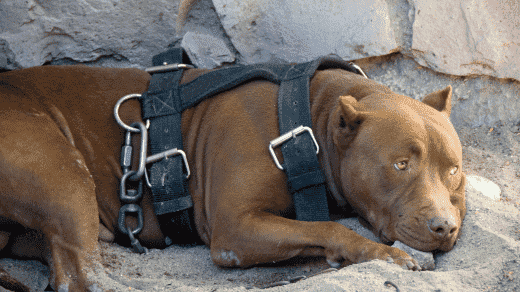Introduction
Separation anxiety is a common behavioral issue that many dogs experience when they are left alone. It can be distressing for both the dog and the owner, but with an effective training schedule, you can help alleviate your furry friend’s anxiety. In this comprehensive guide, we will outline a step-by-step training schedule designed to reduce Trainingsschema verlatingsangst hond in dogs and provide them with the comfort and confidence they need when alone.
Understanding Separation Anxiety in Dogs
Before delving into the training schedule, it’s essential to understand what separation anxiety entails and how it affects dogs. Separation anxiety occurs when a dog becomes excessively anxious and stressed when separated from their owner or left alone. This can result in destructive behaviors, excessive barking, pacing, and even self-injury. Recognizing the signs of separation anxiety and addressing them proactively will set the stage for effective training.
Step 1: Gradual Desensitization
The first step in reducing separation anxiety is to desensitize your dog to being alone. Start by leaving your dog alone for short periods, such as a few minutes, and gradually increase the duration over time. During these absences, avoid making a big fuss when leaving or returning. This gradual exposure helps your dog become more accustomed to your absence and reduces their anxiety.
Step 2: Create a Safe and Relaxing Environment
Designate a specific area in your home where your dog can feel secure and comfortable when alone. This area can be a crate, a room, or a sectioned-off space. Make it cozy by providing a comfortable bed, some familiar toys, and items with your scent. This will create a positive association with the designated area and help your dog feel more at ease during alone time.
Step 3: Establish Departure and Arrival Routines
Consistency is key when it comes to reducing separation anxiety. Establish departure and arrival routines to help your dog understand and predict your comings and goings. Before leaving, engage in calming activities such as a short walk or a puzzle toy to help your dog relax. Similarly, when you return, greet your dog calmly and avoid excessive excitement. These routines create a sense of predictability and stability, easing your dog’s anxiety.
Step 4: Interactive Toys and Mental Stimulation
Boredom can intensify separation anxiety, so it’s important to provide your dog with mental stimulation and interactive toys. Puzzle toys, treat-dispensing toys, and interactive games can keep your dog engaged and entertained during alone time. Mental stimulation not only helps alleviate anxiety but also promotes a sense of fulfillment and reduces destructive behaviors.
Step 5: Regular Exercise and Enrichment Activities
Physical exercise is a crucial component of any dog’s routine, particularly for those with separation anxiety. Engage in regular exercise sessions to help your dog release excess energy and promote relaxation. Consider activities such as brisk walks, runs, or playdates with other dogs. Additionally, enrich your dog’s environment with activities like hide-and-seek games, scent training, or obedience training to provide mental stimulation and build confidence.
Step 6: Positive Reinforcement and Counterconditioning
Positive reinforcement is a powerful tool in training dogs with separation anxiety. Reward your dog with treats, praise, and affection when they exhibit calm behavior during alone time. Gradually increase the duration of absences, always rewarding your dog for their positive response. Counterconditioning techniques, such as associating departures with positive experiences, can also be beneficial. For example, give your dog a special treat or a puzzle toy reserved only for alone time.
Step 7: Seek Professional Assistance if Needed
While most cases of separation anxiety can be effectively managed with a structured training schedule, some dogs may require additional support. If your dog’s anxiety persists or worsens despite your efforts, consider seeking the assistance of a professional dog trainer or a certified animal behaviorist. They can provide specialized guidance, develop a tailored training plan, and address any underlying issues contributing to the anxiety.
Conclusion
Reducing separation anxiety in dogs requires patience, consistency, and a well-designed training schedule. By gradually desensitizing your dog to being alone, creating a safe environment, establishing routines, providing mental stimulation and exercise, using positive reinforcement, and seeking professional help when necessary, you can help your furry companion overcome their anxiety and enjoy a more balanced and relaxed life.
Remember, each dog is unique, so adapt the training schedule to suit your dog’s specific needs. With dedication and a compassionate approach, you can make significant progress in reducing separation anxiety and fostering a stronger bond with your beloved canine companion.


